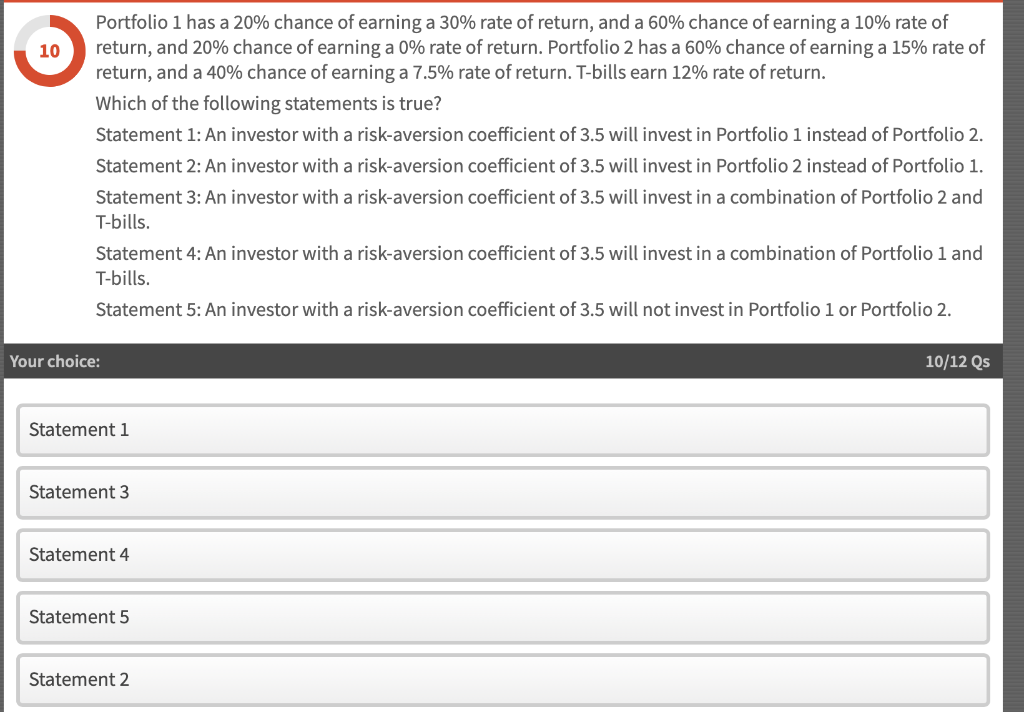
10 Portfolio 1 has a 20% chance of earning a 30% rate of return, and a 60% chance of earning a 10% rate of return, and 20% chance of earning a 0% rate of return. Portfolio 2 has a 60% chance of earning a 15% rate of return, and a 40% chance of earning a 7.5% rate of return. T-bills earn 12% rate of return. Which of the following statements is true? Statement 1: An investor with a risk-aversion coefficient of 3.5 will invest in Portfolio 1 instead of Portfolio 2. Statement 2: An investor with a risk-aversion coefficient of 3.5 will invest in Portfolio 2 instead of Portfolio 1. Statement 3: An investor with a risk-aversion coefficient of 3.5 will invest in a combination of Portfolio 2 and T-bills. Statement 4: An investor with a risk-aversion coefficient of 3.5 will invest in a combination of Portfolio 1 and T-bills. Statement 5: An investor with a risk-aversion coefficient of 3.5 will not invest in Portfolio 1 or Portfolio 2. Your choice: 10/12 Qs Statement 1 Statement 3 Statement 4 Statement 5 Statement 2 10 Portfolio 1 has a 20% chance of earning a 30% rate of return, and a 60% chance of earning a 10% rate of return, and 20% chance of earning a 0% rate of return. Portfolio 2 has a 60% chance of earning a 15% rate of return, and a 40% chance of earning a 7.5% rate of return. T-bills earn 12% rate of return. Which of the following statements is true? Statement 1: An investor with a risk-aversion coefficient of 3.5 will invest in Portfolio 1 instead of Portfolio 2. Statement 2: An investor with a risk-aversion coefficient of 3.5 will invest in Portfolio 2 instead of Portfolio 1. Statement 3: An investor with a risk-aversion coefficient of 3.5 will invest in a combination of Portfolio 2 and T-bills. Statement 4: An investor with a risk-aversion coefficient of 3.5 will invest in a combination of Portfolio 1 and T-bills. Statement 5: An investor with a risk-aversion coefficient of 3.5 will not invest in Portfolio 1 or Portfolio 2. Your choice: 10/12 Qs Statement 1 Statement 3 Statement 4 Statement 5 Statement 2







